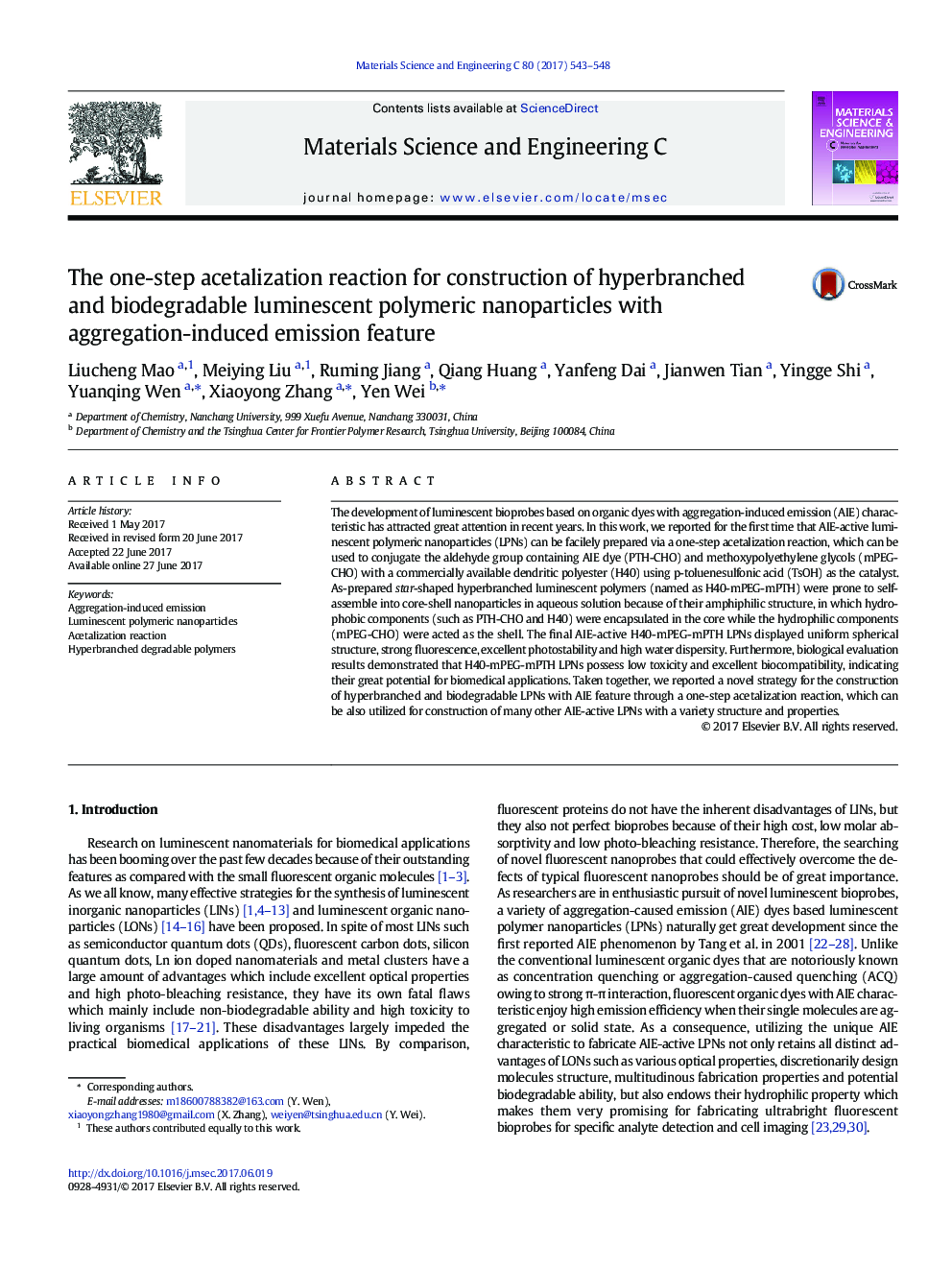| Article ID | Journal | Published Year | Pages | File Type |
|---|---|---|---|---|
| 5434350 | Materials Science and Engineering: C | 2017 | 6 Pages |
â¢Construction of hyperbranched and biodegradable luminescent polymeric nanoparticlesâ¢These LPNs showed aggregation-induced emission feature.â¢These AIE-active LPNs showed great water dispersity and biocompatibility.â¢These AIE-active LPNs are of great potential for biomedical applications.
The development of luminescent bioprobes based on organic dyes with aggregation-induced emission (AIE) characteristic has attracted great attention in recent years. In this work, we reported for the first time that AIE-active luminescent polymeric nanoparticles (LPNs) can be facilely prepared via a one-step acetalization reaction, which can be used to conjugate the aldehyde group containing AIE dye (PTH-CHO) and methoxypolyethylene glycols (mPEG-CHO) with a commercially available dendritic polyester (H40) using p-toluenesulfonic acid (TsOH) as the catalyst. As-prepared star-shaped hyperbranched luminescent polymers (named as H40-mPEG-mPTH) were prone to self-assemble into core-shell nanoparticles in aqueous solution because of their amphiphilic structure, in which hydrophobic components (such as PTH-CHO and H40) were encapsulated in the core while the hydrophilic components (mPEG-CHO) were acted as the shell. The final AIE-active H40-mPEG-mPTH LPNs displayed uniform spherical structure, strong fluorescence, excellent photostability and high water dispersity. Furthermore, biological evaluation results demonstrated that H40-mPEG-mPTH LPNs possess low toxicity and excellent biocompatibility, indicating their great potential for biomedical applications. Taken together, we reported a novel strategy for the construction of hyperbranched and biodegradable LPNs with AIE feature through a one-step acetalization reaction, which can be also utilized for construction of many other AIE-active LPNs with a variety structure and properties.
Graphical abstractThe hyperbranched AIE-active luminescent polymeric nanoparticles with high water dispersity, low cytotoxicity and biodegradable potential were fabricated through a one-step acetalization reaction for the first time.Download high-res image (87KB)Download full-size image
